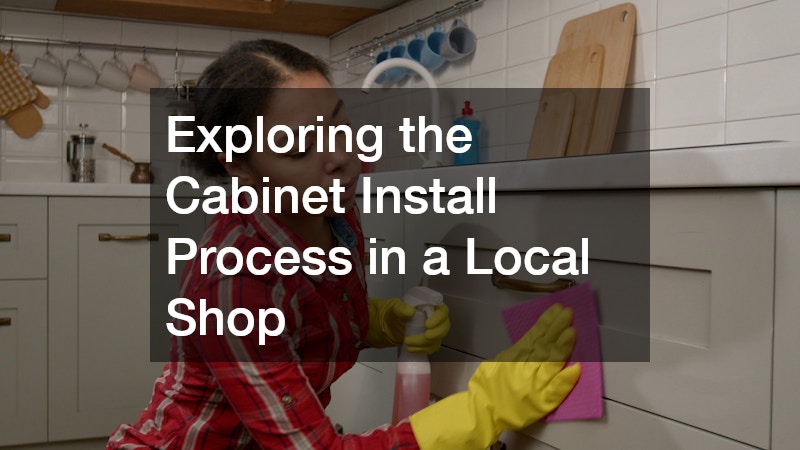This article delves into the cabinet installation process at a local shop, exploring the steps involved, common questions, and tips for a successful project. Whether you are upgrading your kitchen or enhancing a retail space, understanding this process will help you achieve the best results.
What Are the Steps Involved in a Cabinet Install?
The cabinet installation process is a multi-step journey that begins with planning and ends with the final adjustments to ensure everything is fit and finished perfectly. Each phase is crucial, as it builds upon the previous one to create a successful outcome.
From selecting the right design to measuring the space accurately, careful attention must be paid to detail.
Once the plans are set, the next step typically includes the removal of existing cabinetry. This can be a straightforward or complicated process depending on the current setup, which may involve plumbing or electrical components. Proper tools and techniques are essential throughout to avoid damage to the walls or surrounding areas.
After removal, the installation phase begins. This usually involves assembling the cabinetry, securing it to the walls, and making sure it is level and stable. During this stage, any necessary adjustments are made to ensure the cabinetry aligns with plumbing or electrical features, paving the way for a seamless finish.
How Long Does the Cabinet Installation Process Typically Take?
The timeframe for cabinet installation can vary widely based on several factors, including the complexity of the project, the number of cabinets being installed, and any unforeseen challenges that may arise. Generally, a straightforward installation may take a few days, while more complex projects could stretch over a week or longer.
Local shops typically provide estimates, but it’s important to account for possible delays due to factors such as custom orders or site preparation needs. Holidays and peak seasons might also affect lead times, as demand for services generally increases during those periods.
Additionally, the skill level of the installation crew can influence the duration of the project. Experience and familiarity with various cabinetry types can expedite the process, ensuring that the installation is not only faster but also meets quality standards. Therefore, choosing a reputable local shop that specializes in cabinet installation can mitigate potential time-related issues.
What Should I Expect from a Local Shop During Installation?
When engaging a local shop for cabinet installation, you can expect a collaborative customer service experience. Clear communication is essential, so staff should be available to answer questions and provide updates at each stage of the project. This establishes a trusting relationship between the customer and the shop.
Your local shop should also conduct a thorough assessment of your space and needs before beginning the installation process. This involves discussing design preferences, material choices, and any specific requirements you have, which allows the team to tailor their approach to your particular vision.
Finally, a good local shop will not only focus on the installation itself but will also include a follow-up service to ensure everything transitioned smoothly. This can consist of checking for misalignments or functional issues after the cabinetry has been in use for a while and providing easy access to warranty information if needed.
How Can I Prepare My Space for Cabinet Installation?
Preparing your space for cabinet installation is a critical step in ensuring the project runs smoothly. It’s advisable to clear out the area where the new cabinets will be installed, removing any furniture or obstacles that could impede the installers’ movement. This allows for efficient work and minimizes delays.
Additionally, consider the environment where the installation will take place. Ensure the room temperature is comfortable and consider protecting existing surfaces, like flooring, with drop cloths or plastic sheeting. This helps prevent damage during the installation procedure, promoting a clean working environment.
Lastly, communication is key in preparation. Sharing any unique aspects of your space with the installation team will help them plan accordingly. This includes pointing out load-bearing walls, electrical outlets, or plumbing issues that may affect cabinet placement or stability, ultimately leading to a more effective and precise installation process.
In summary, understanding the cabinet install process can enhance your experience and help you better prepare for your project with a local shop. Each step is designed to ensure a seamless transition from planning to execution, maximizing satisfaction and functionality in your space. Whether you are looking for aesthetic appeal or practical solutions, being informed can significantly impact your project’s success.
